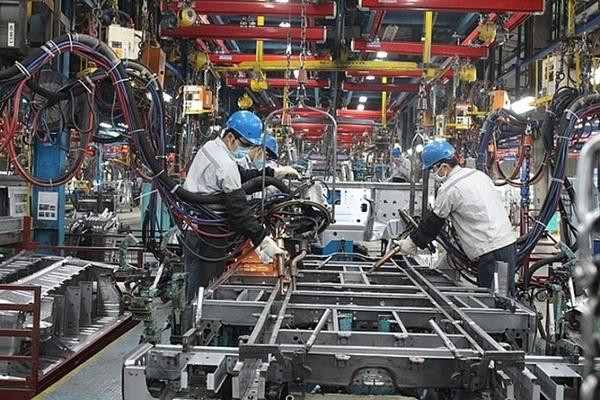
As the Government has large state owned enterprises (SOEs), it needs to assign them tasks of national stature. SOEs need to lead in green development, digital development and digital transformation.
SOEs are still facing failures in performing the tasks of the state sector in the Socialist-oriented market economy. Their most important tasks are leading the economy, and paving the way and implementing development tasks that private and foreign invested enterprises (FIEs) don’t or can’t do.
Who will lead in industrialization?
SOEs have failed to develop a machine and equipment manufacturing industry, which explains why Vietnam has to import machine imports, and why Vietnam had a trade gap for many decades before it began seeing trade surpluses some years ago.
Hanoi Mechanical Factory, Tran Hung Dao Mechanical Company and Vinashin were shut down because of big losses which led to bankruptcy. However, the bankruptcy of SOEs should not only be blamed on the enterprises’ faults, but also on state management over the economic sector.
Many SOEs want to run production and business under the same mechanism as the one applied to private enterprises. This means that they only have to observe the laws, and don’t have to bear deep intervention by management bodies, because the intervention and lack of autonomy may cripple enterprises’ creativity.
Management oversight
In addition to management ministries, SOEs also bear the management of most of the other ministries as the members of the Government. There is a ministry in charge of managing land, while others are in charge of finance, market, construction, science and technology and personnel. Also, they are under management of local authorities.
In recent years, SOEs have been put under the management of a new body – the Committee for State Capital Management at Enterprises.
Now is the right time to eliminate the mechanism. In fact, this is not a new idea but it was raised in the Resolution of the 7th midterm conference of the Party.
When SOEs failed to develop a machine manufacturing industry, businesses and individuals in the country jumped into the field, making many different machines, from plows to combine harvesters. A private enterprise is making next-generation cars (electric cars) and competes with other rivals in the European and US markets.
SOEs have given up mineral exploitation and processing, though Vietnam has advantages in industrial reserves and can compete in the world market, such as for rare earth and tungsten.
As for bauxite, Vietnam has been exploiting it for many years, but it can only undertake simple works and export raw materials in small quantities. The exploitation at Thach Khe iron mine has been suspended and it’s unclear if mining will resume.
SOEs absent in ‘difficult’ areas
In principle, SOEs have to be present in remote and difficult areas, where private enterprises and FIEs are not willing to invest. But they are absent. The northwest, central and southwest regions remain in difficulties, and SOEs need to be there immediately.
It has been more than three decades since Vietnam shifted from a centrally planned economy to a socialist-oriented market economy, yet a new system for the SOEs sector remains absent.
Vietnam is striving to become a higher middle-income country, and a developed country by 2030-2045. By that time, SOEs would contribute 5-6 times more than the $150 billion to GDP as currently seen.
The old system cannot do this and it’s necessary to develop a new SOE system, which comprises next-generation machine manufacturing, and rare metal exploitation and processing that serve engineering industries in the 4.0 era. Also, SOEs need to be present in remote and difficult areas. This is a challenge not only for SOEs but for the entire leadership and state management agencies.
Assigning tasks to SOEs under national strategies
According to Minister of Information and Communication Nguyen Manh Hung, the State should assign challenging tasks and set high goals to SOEs, based on national development strategies.
The state has its ‘troops’ which are SOEs and it needs to dispose the troops in a way to create synergetic effects.
Currently, enterprises draw up strategies and business plans for from their own perspectives that serve their interests only, and the goals are not challenging so that they can ‘stay safe’. Currently, as the goals are not high, SOE development is not commensurate with their potential.
The Government needs to assign tasks in accordance with national strategies, and set high goals and create challenges for SOEs. The enterprises need to lead in green development and digital development.
Digital development is both a new development space and new business model. The national committee for digital transformation, with the Ministry of Information and Communications as the standing agency, is leading national digital transformation. The ministry will soon submit to the Prime Minister a strategy on digital transformation for SOEs.
Dinh Duc Sinh